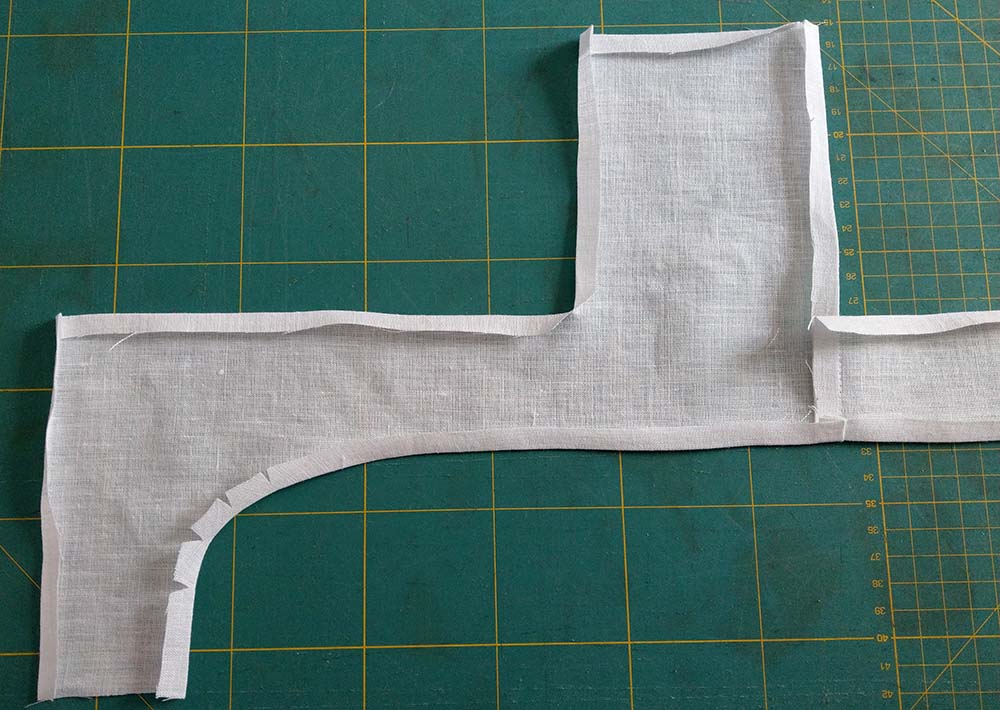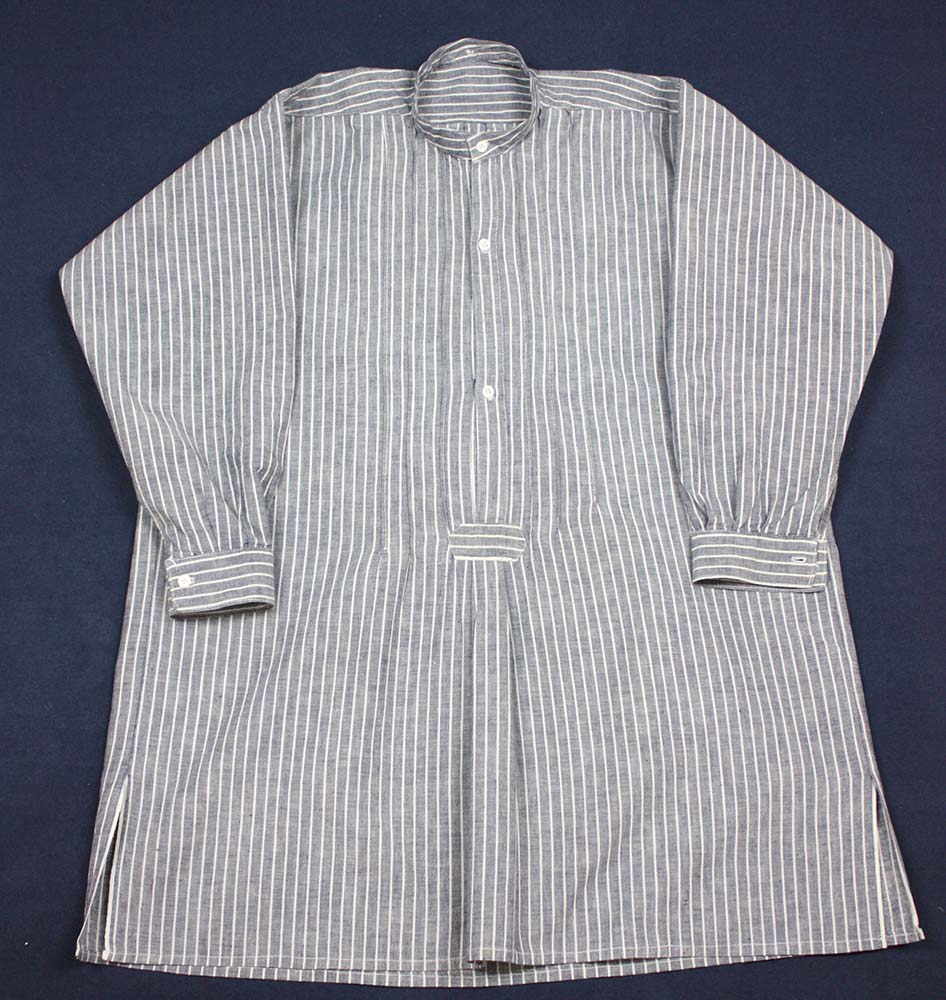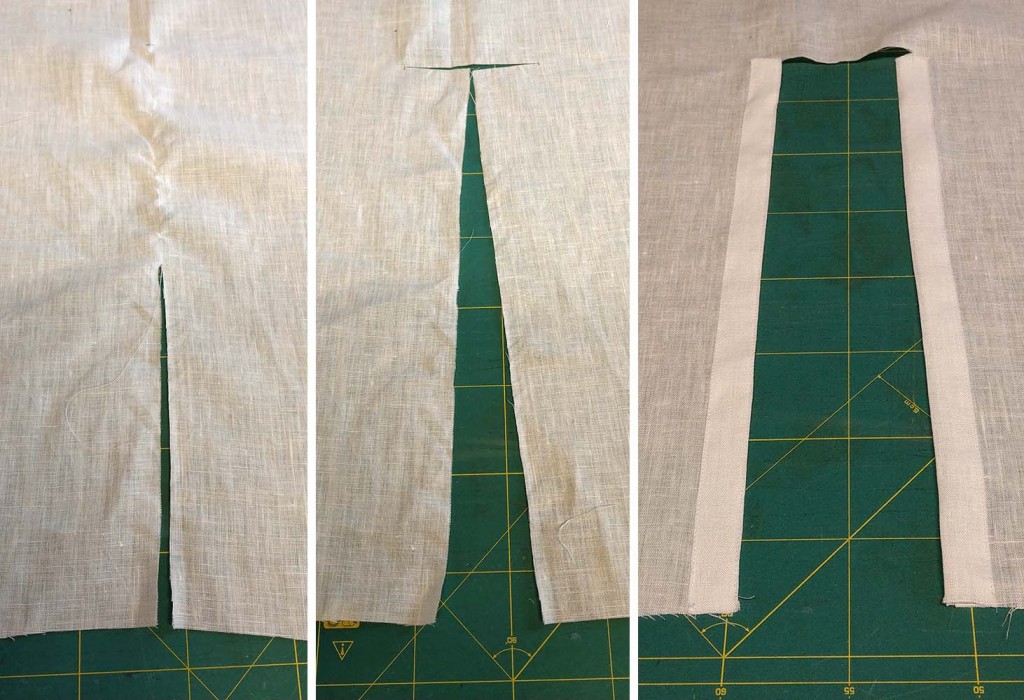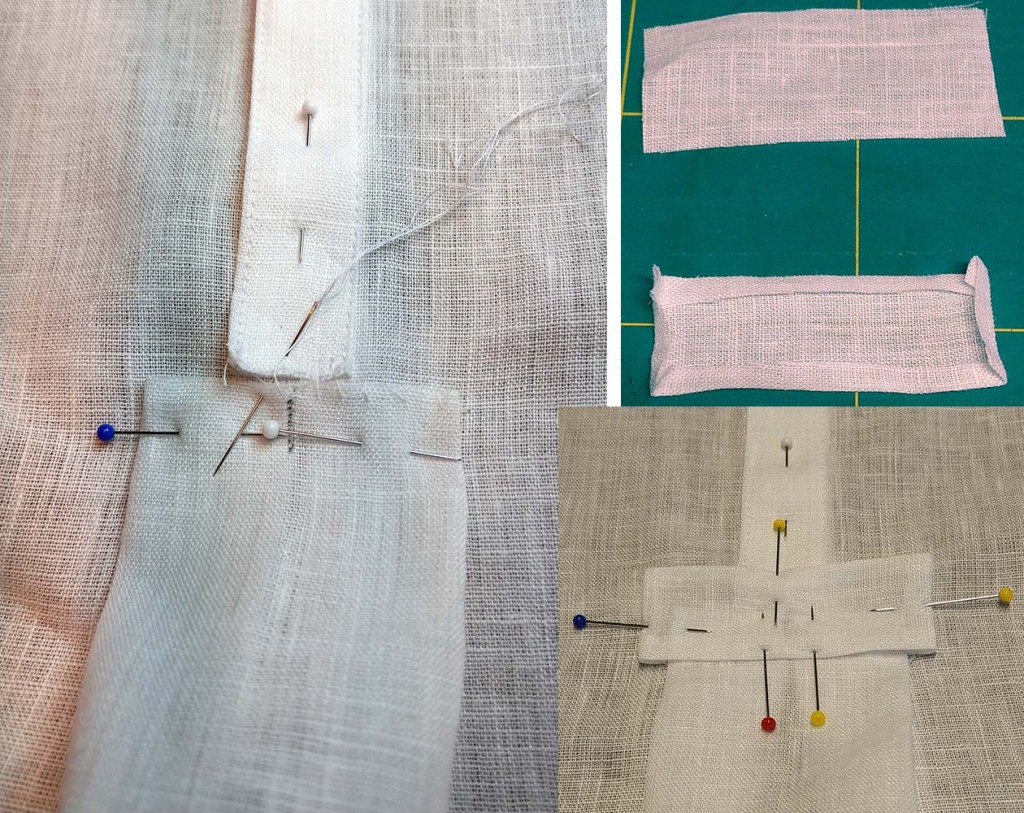Part 1 General Information
Part 2 Fronts
Part 3 Sleeves and collar
The sewing pattern is available via Etsy.
Now the shirt is already finished, just the buttonholes and buttons are missing. An 1830-60 shirt has three vertical buttonholes at the button tab and one vertical buttonhole at the collar. If you prefer e detachable collar instead of a stock collar you have to make small vertical buttonholes on both collar sides and one vertical buttonhole at the center back of the collar. The collar will be attached with collar studs.
However, how to sew a buttonhole by hand? First mark the position of your buttonholes, they should be about 1/16” -1/8” (2-3mm) longer than the diameter of your button. I know, it isn´t historically accurate, but I prefer to add some Fray Check along the marked cutting line. First it prevents the fabric from fraying, second is stabilizes the edges for easier sewing. Let´s start! Cut open the buttonhole with scissors, better with a punching tool.
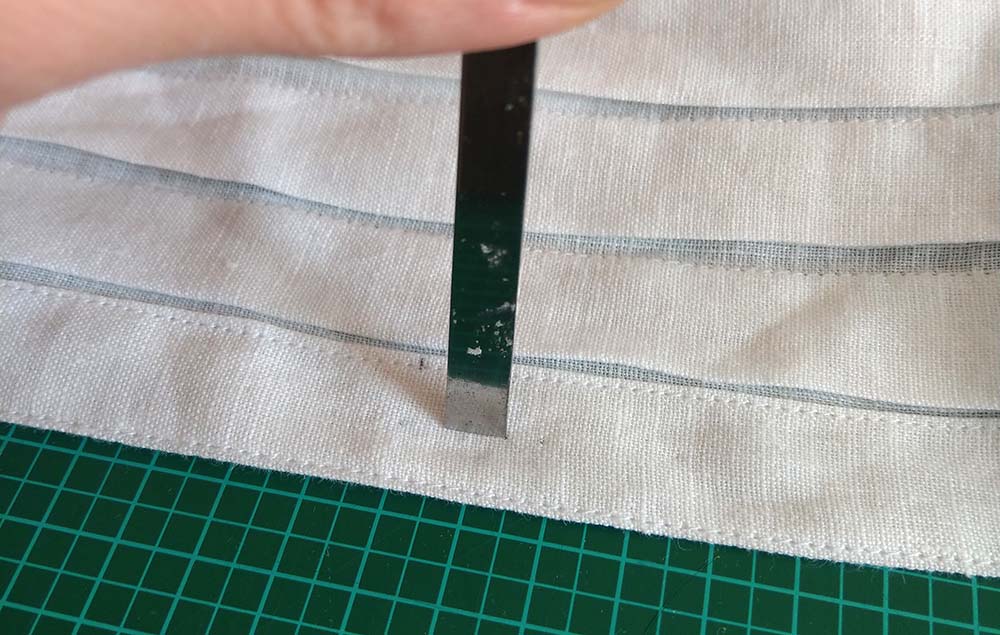 Continue reading
Continue reading



